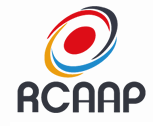Topdressing fertilization with nitrogen and potassium levels in sweet-potato
DOI:
https://doi.org/10.5433/1679-0359.2013v34n1p117Keywords:
Ipomoea batatas, Mineral nutrition, Soil fertility, Tropical potato.Abstract
Balanced fertilizations with N and K often increase the performance of crops, however, when there is absence of one of these nutrients in poor soils, can reduce crop response to fertilization with the other. The objective of this work was to evaluate the productivity of sweet-potato, the amount of sweetpotato without quality, and leaf nutrients analysis, of sweet-potato crop fertilized with N and K. The trial was conducted in farming for commercial production, in Presidente Prudente, São Paulo State, during February-June 2007, in a dystrophic Ultisol of medium texture. The experimental design was a randomized complete block design, with four replications, on factorial 4 x 4: levels of 0, 30, 60 and 120 kg N ha-1 (urea source) combined with levels of 0, 30, 60 and 120 kg K2O ha-1 (KCl source), applied to 39 days after planting of the crop. The sweet-potato is responsive to topdressing application with nitrogen and potassium, however, the greatest increases in productivity occur when doses of N and K are combined. Fertilization with N and K not increase the amount of sweet-potato without quality marketing. The highest increase in productivity of sweet-potato is reached with topdressing combined with 100 kg N ha-1 plus 120 kg K2O ha-1.
Downloads
Downloads
Published
How to Cite
Issue
Section
License
Copyright (c) 2013 Semina: Ciências Agrárias

This work is licensed under a Creative Commons Attribution-NonCommercial 4.0 International License.
Semina: Ciências Agrárias adopts the CC-BY-NC license for its publications, the copyright being held by the author, in cases of republication we recommend that authors indicate first publication in this journal.
This license allows you to copy and redistribute the material in any medium or format, remix, transform and develop the material, as long as it is not for commercial purposes. And due credit must be given to the creator.
The opinions expressed by the authors of the articles are their sole responsibility.
The magazine reserves the right to make normative, orthographic and grammatical changes to the originals in order to maintain the cultured standard of the language and the credibility of the vehicle. However, it will respect the writing style of the authors. Changes, corrections or suggestions of a conceptual nature will be sent to the authors when necessary.


















